An isolated island off the coast of Africa, Madagascar is often hailed as the ultimate destination for nature enthusiasts due to the amazing animals of Madagascar. Its unique wildlife evolved over millions of years in isolation, resulting in species that exist nowhere else on Earth. From playful lemurs to masterfully camouflaged chameleons, Madagascar’s biodiversity is nothing short of astonishing.
Today we take a closer look at Madagascar’s most iconic wildlife, showcasing why this island is considered a living laboratory of evolution and a must-visit destination for wildlife lovers.
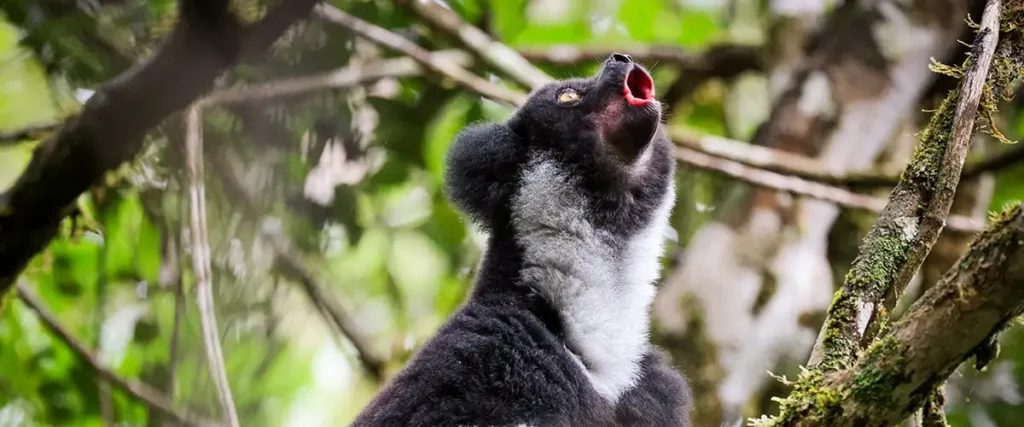
Lemurs: Madagascar’s Most Famous Residents
Lemurs are synonymous with Madagascar. These primates, found only on this island, have diversified into over 100 species, each with its own unique characteristics.
- Indri (Indri indri): Known for their haunting, melodic calls that echo through the rainforests, the Indri (pictured above) is the largest living lemur. They are revered by locals and symbolize Madagascar’s enchanting wilderness.
- Ring-Tailed Lemur (Lemur catta): Recognized by their long, striped tails, these social lemurs are often seen basking in the sun in a lotus position.
- Aye-Aye (Daubentonia madagascariensis): This nocturnal lemur is one of the island’s most peculiar creatures. Its elongated middle finger is used to tap on trees and extract insects, a behavior that has made it a symbol of bad luck in local folklore.
- Mouse lemurs (Microcebus spp.): The smallest genus of lemurs, mouse lemurs are also the smallest primates on Earth. These nocturnal creatures are famously cute and eat mainly insects. As recently as 1992 there were only two known species; today there are 24!
Travel Tip: Visit Andasibe-Mantadia National Park for a chance to hear the Indri’s eerie calls and see lemurs up close.
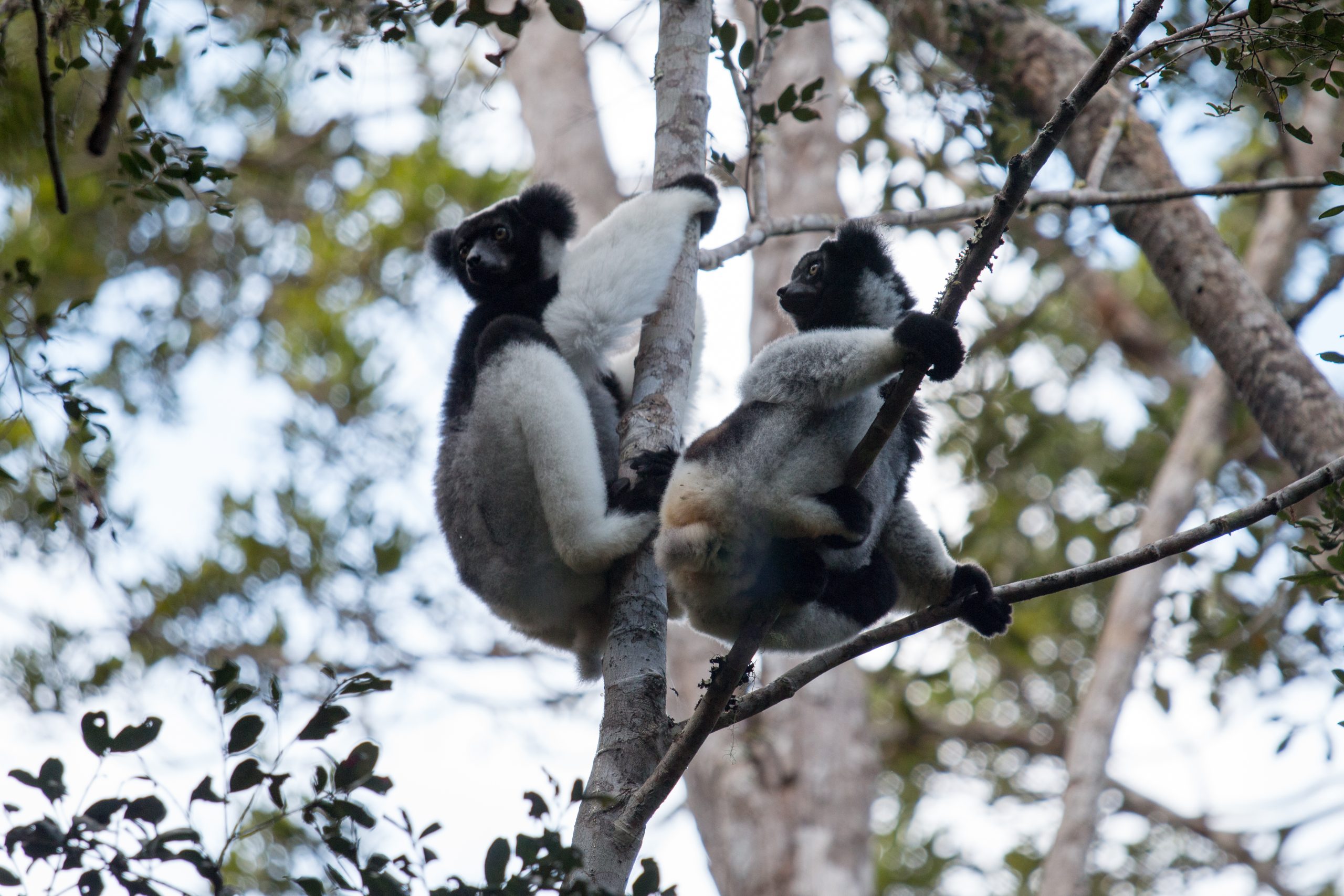
Explore Madagascar’s RN7 in 2026
Chameleons: The Masters of Disguise
Madagascar is home to nearly half of the world’s chameleon species, including some of the largest and smallest ever discovered.
- Parson’s Chameleon (Calumma parsonii): One of the largest chameleons, it can grow up to 70 centimeters long and is known for its striking coloration.
- Brookesia Chameleons (Brookesia spp.): Among the smallest reptiles in the world, these tiny chameleons live on the forest floor, blending seamlessly with fallen leaves.
- Panther Chameleon (Furcifer pardalis): Renowned for their vibrant colors, these chameleons can shift hues to communicate or camouflage.
Travel Tip: Head to Ranomafana National Park or Amber Mountain National Park to see these incredible reptiles in their natural habitats.
The Fossa: Madagascar’s Largest Predator
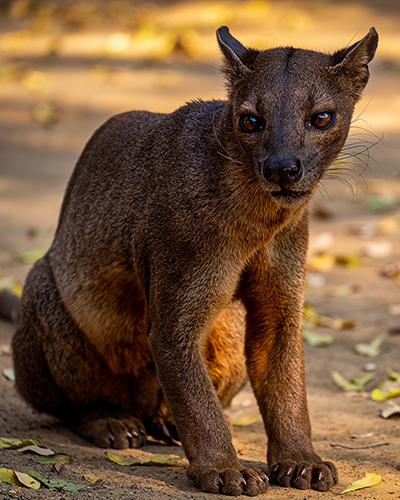
The Fossa (Cryptoprocta ferox) is Madagascar’s top predator, resembling a cross between a cat and a mongoose. With its slender body and muscular build, the fossa is an adept hunter, primarily preying on lemurs but capable of taking down a variety of other animals.
Fossas are elusive, but with luck, you might spot one in Kirindy Forest.
Fun Fact: Despite its cat-like appearance, the fossa is more closely related to the mongoose family.
Unusual Reptiles and Amphibians
Madagascar’s herpetofauna is as unique as its mammals, featuring creatures that are masters of survival and camouflage.
- Leaf-Tailed Gecko (Uroplatus spp.): These geckos are true camouflage experts, blending perfectly with bark, leaves, or moss.
- Tomato Frog (Dyscophus antongilii): Named for its vibrant red color, this frog secretes a sticky toxin to deter predators.
- Radiated Tortoise (Astrochelys radiata): Found in the spiny forests of southern Madagascar, this tortoise is recognized for its star-like shell pattern.
Travel Tip: Explore the spiny forests near Ifaty to see radiated tortoises or take a nighttime rainforest walk (offered by many hotels and lodges near parks) to spot geckos and frogs.
A Bird-Watching Paradise
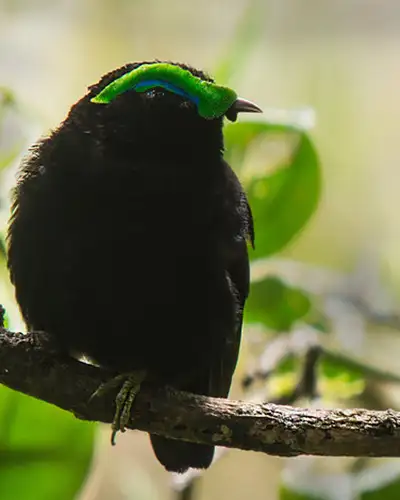
Not to be outdone by terrestrial animals of Madagascar, there is also an impressive array of bird life, with over 280 bird species, around 100 of which are endemic.
- Madagascar fish eagle (Icthyophaga vociferoides): A stunning but critically endangered species native to the northwest of the island
- Velvet asity (Philepitta castanea): A small, vibrant bird known for its unique mating displays
- Madagascar crested ibis (Lophotibis cristata): An elusive ground-dwelling bird
Travel Tip: To get the best experience as a birdwatcher, make sure you get a guide who specialises in birding when visiting each national park or reserve.
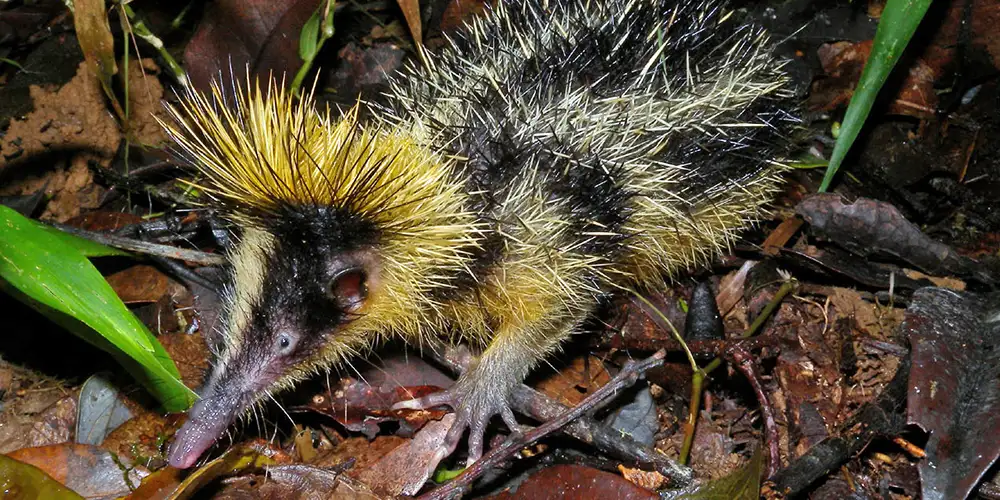
Tenrecs: Madagascar’s Quirkiest Mammals
Tenrecs (Tenrecidae spp.), small insectivores unique to Madagascar, come in a variety of forms. From the spiny tenrec, resembling a miniature hedgehog, to aquatic species adept at swimming, these mammals are a testament to the island’s incredible evolutionary adaptations.
Fun Fact: Tenrecs use specialized quills to produce sounds, a form of communication called stridulation, also observed in insects.
The Baobabs: Madagascar’s Botanical Behemoths
Though not wildlife in the traditional sense, Madagascar’s baobab trees are ecological marvels. The Avenue of the Baobabs near Morondava is one of the most iconic landscapes on the island. These towering, bottle-shaped trees provide essential habitats for birds, insects, and other wildlife.
Travel Tip: Visit the Avenue of the Baobabs at sunset for unforgettable photographs of these ancient giants.
The Threats Facing the Animals of Madagascar
Madagascar’s biodiversity is under severe threat from deforestation, hunting, and habitat loss. Perhaps as much as 50% of the original forest cover of Madagascar has been lost, leaving many species critically endangered. Protected areas like Andasibe-Mantadia National Park and Masoala National Park are vital for preserving Madagascar’s natural heritage.
Efforts are underway to address these challenges, with ecotourism serving as a key contributor to conservation funding. By exploring Madagascar responsibly, travelers can help support these efforts while immersing themselves in the island’s extraordinary wildlife.
Why nature lovers should visit Madagascar in 2026
The animals of Madagascar are a marvel of evolution, showcasing extraordinary biodiversity. From lemurs bounding through lush rainforests to the vibrant hues of chameleons, each sighting highlights the island’s natural wonders.
For nature enthusiasts, travelling to Madagascar offers more than just a getaway—it’s a chance to encounter some of the world’s rarest species while supporting conservation efforts. Whether exploring a national park or admiring the iconic baobab trees, the rich wildlife of Madagascar promises unforgettable experiences.


